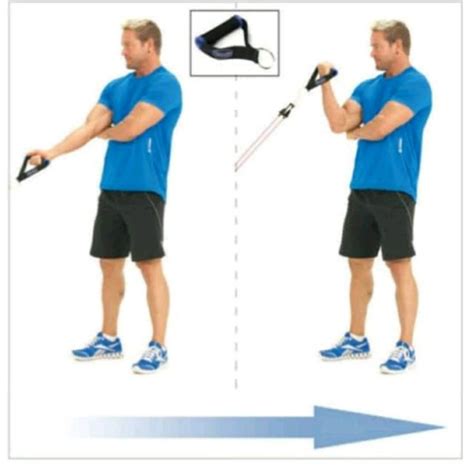Break strength plateaus: advanced tactics for men’s peak lifting performance?

Hitting a strength plateau is a common, yet frustrating, experience for many men dedicated to lifting. What once felt like consistent progress can suddenly grind to a halt, leaving you questioning your routine. But a plateau isn’t a dead end; it’s a signal to evolve your training. Moving beyond the basics requires a strategic shift, incorporating advanced tactics designed to shock your system, identify weak points, and reignite growth. This article delves into sophisticated strategies to help you break through those stubborn barriers and achieve peak lifting performance.
Understanding the Plateau Phenomenon
Your body is incredibly adaptive. When you consistently perform the same exercises with similar intensity and volume, it eventually adapts to the stress, becoming more efficient. This efficiency, while good for day-to-day tasks, means the stimulus for growth diminishes. To continue progressing, you need to introduce new forms of stress that challenge your body in unfamiliar ways, forcing it to adapt and grow stronger.
1. Implementing Undulating Periodization
Traditional linear periodization involves gradually increasing intensity over time. Undulating periodization, however, varies intensity and volume more frequently—often within the same week or even session-to-session. This keeps your body guessing and allows for different types of adaptation (strength, hypertrophy, power) to be trained concurrently.
- Daily Undulating Periodization (DUP): You might have a heavy day (low reps, high weight), a moderate day (medium reps, medium weight), and a light day (high reps, low weight) for the same lift within one week.
- Benefits: Prevents overtraining, provides varied stimuli, and targets multiple strength qualities simultaneously.

2. Strategic Deloads: The Art of Intelligent Recovery
Often, a plateau isn’t a lack of effort but a lack of recovery. Chronic fatigue, both muscular and central nervous system (CNS), can significantly hinder performance. Strategic deloads are planned periods of reduced training volume and/or intensity designed to allow your body to fully recover and supercompensate.
- How to Deload: Reduce your usual working weight by 40-60% and/or reduce your sets and reps by 50% for 5-7 days. Focus on perfect form and mind-muscle connection.
- When to Deload: Typically every 4-8 weeks, or whenever you notice persistent fatigue, joint pain, or a dip in performance.
3. Advanced Training Techniques for Overload
Beyond simply adding weight or reps, these techniques introduce novel ways to increase time under tension, intensity, and muscle fiber recruitment.
- Drop Sets: Perform a set to failure, then immediately reduce the weight and continue for more reps until failure again. Repeat 1-2 times.
- Rest-Pause Training: Perform a set to near failure, rest for 10-20 seconds, then perform a few more reps with the same weight. Repeat for 2-3 mini-sets.
- Supersets/Compound Sets: Pair two exercises back-to-back with minimal rest. Supersets target opposing muscle groups (e.g., biceps curl and triceps extension), while compound sets target the same muscle group with different exercises (e.g., dumbbell press and dumbbell fly).
- Partial Reps/Holds: Utilize heavier loads for a limited range of motion where you are strongest, or hold a weight isometrically at a sticking point to build strength in that specific range.
- Negatives (Eccentric Training): Focus on the lowering (eccentric) phase of an exercise, using a heavier weight than you can lift concentrically. Have a spotter help with the lifting phase.

4. Addressing Weak Links with Specialized Accessory Work
Often, a major lift (like a squat, bench press, or deadlift) plateaus because a smaller, supporting muscle group is lagging. Identify your weak links and dedicate specific accessory work to strengthen them.
- Bench Press: Weak triceps? Incorporate close-grip bench, skullcrushers. Weak shoulders? Add overhead press variations, face pulls.
- Squat: Weak glutes/hamstrings? Focus on Romanian deadlifts, glute bridges, good mornings. Weak core? Add planks, anti-rotation exercises.
- Deadlift: Weak back erectors? Include back extensions, GHD raises. Weak grip? Implement heavy holds, farmers walks.

5. Optimize Nutrition, Hydration, and Sleep
Even the most advanced training program will falter without proper support from your lifestyle. These foundational elements are critical for recovery and performance.
- Nutrition: Ensure adequate protein intake (2.2g/kg bodyweight) for muscle repair, sufficient complex carbohydrates for energy, and healthy fats for hormone production.
- Hydration: Dehydration significantly impairs strength and endurance. Aim for at least 3-4 liters of water daily, more if you’re training intensely.
- Sleep: Aim for 7-9 hours of quality sleep per night. This is when your body repairs muscle tissue, releases growth hormone, and recovers your central nervous system.

6. Refining Form and Technique
Sometimes, the key to unlocking new strength isn’t lifting heavier, but lifting smarter. Minor imperfections in form can limit your potential, increase injury risk, and prevent you from engaging target muscles effectively.
- Video Analysis: Record your main lifts from different angles. Review them critically, or better yet, have an experienced coach or lifting partner analyze your technique for subtle flaws.
- Cueing: Focus on specific internal or external cues during your lifts (e.g., “drive your knees out” for squats, “tuck your elbows” for bench press) to improve muscle activation and movement efficiency.

Conclusion
Breaking strength plateaus is a multifaceted challenge that demands a sophisticated approach. By integrating undulating periodization, strategic deloads, advanced training techniques, targeted accessory work, and meticulously optimizing recovery, you can provide your body with the novel stimuli it needs to continue growing. Remember, consistency, patience, and a willingness to adapt your strategy are the true keys to unlocking your full strength potential and achieving peak lifting performance.








